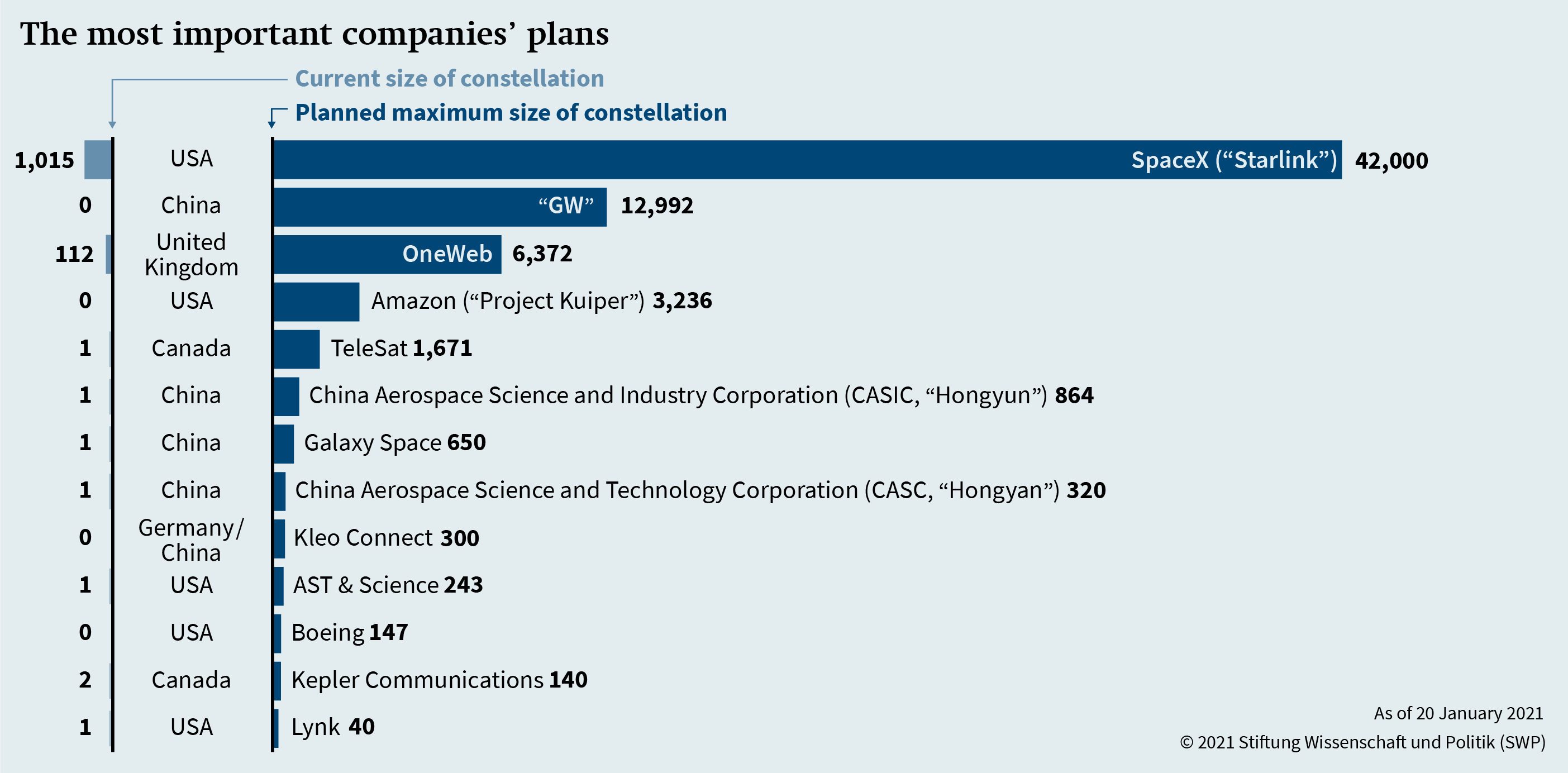Internet Rivalry in Space
May 28, 2022 | Expert Insights

It is being widely reported that Elon Musk’s vast network of Starlink satellites enabled President Zelensky of Ukraine to launch his almost incessant media blitz despite the Russians doing their best to blank out his internet communications.
As Russian tanks rolled over the border, the Ukrainian minister of digital transformation Mykhailo tweeted a desperate appeal to the owner of SpaceX, “While you try to colonize Mars -- Russia try to occupy Ukraine! While your rockets successfully land from space -- Russian rockets attack Ukrainian civil people! We ask you to provide Ukraine with Starlink stations.” Within ten hours, Elon Musk had announced that “Starlink was active in Ukraine with more terminals en route.” The rest is history.
Background
The importance of internet was sharply brought into focus by the two yearlong pandemics. At no other moment of human history was the value of the internet as critical to mankind as the entire world is united in its struggle against the pandemic raging across the globe. The demand for connectivity, especially in rural and poor communities for remote working, online classes, enabling remote healthcare access and sharing of medical data and expertise underscores the need for radical solutions to connect people globally.
As the world grappled with the virus, Starlink accelerated its launches to put as many of its planned 34, 000 satellites in a low earth orbit. This vast constellation of satellites would beam back internet signals to the world, virtually without any cost to the consumer.
It is a fact that “broadband apartheid” is widely in practice all over the world, and even more so in the developed world. While telecom companies have brought cities even in emerging economies at par with world standards in terms of 4G, and some are preparing to roll out 5G, rural areas with low incomes are generally being ignored. Only highly inefficient, state-run telecom operators are forced to invest in such markets and they too, due to market forces, are on the verge of closure. Large corporations do not find it commercially viable to erect telco[AS1] -grade towers, power backups, fibre backhauls and mobile baseband to serve such areas, leading to “internet blackouts” over vast swathes of territory.
It is estimated that more than half the world remains "offline." Installing OFCs and rigging mobile phone masts with power back up for the remaining 4 billion people will take time, a long time. In India, internet coverage is low, with less than 25 percent of its 1.3 billion population having access to the web. In rural India, internet 14 per cent.

In a scenario straight out of a science fiction novel, several private companies are investing billions in launching special-purpose tiny satellites into Low Earth Orbit (LEO), literally tens of thousands of them, to beam internet to everyone, anywhere, all the time and totally free.
The leading protagonist is OneWeb, a global communication company which already has a constellation of 74 satellites in space, making it the market leader. It has already installed ground terminals globally, secured spectrum and is now working fast to integrate the user to the system. The larger plan envisages adding about 2000 additional satellites which will be placed in a circular low Earth orbit at an altitude of 1200km transmitting/ receiving on the Ku band. Leon Musk’s SpaceX is of course the largest player planning a 34,000 satellite constellation named Starlink.
Apart from satellites, long-endurance solar-powered drones also provide an alternative platform. In a top-secret programme "Sky Bender," Google has been testing solar-powered drones to beam internet from high altitude, since 2016. In a similar secret programme being run by the U.S. military from 2014 onwards, called Mobile Hotspots, drones are used as platforms to stream data at one gigabit per second. Softbank, in partnership with AeroVironment, has developed a solar-powered drone called the Hawk 30 to deliver 5G and IOT connectivity from the skies.
Analysis
These new generation mini satellites remain at a low orbit thereby enabling a low round trip data time between the user and the satellite called latency than conventional satellites. Ukraine has shown vividly how they can be used in emergency scenarios where conventional communication network is the first target of the attacker. Without being hampered by cumbersome ground infrastructure, Starlink like systems can be deployed any where in the world in a matter of hours. Their utility in times of humanitarian disasters can only be imagined.
Recently, SpaceX signed a deal with the U.S. Department of Defence to detect and track hypersonic weapon systems. It is a well-known fact that China has stolen a lead in this field as was demonstrated by its recent test over the South China Seas. In response, a paper published by the Beijing Institute of Tracking and Telecommunications, which is controlled by PLA, declared that China has the ability to “target each and every satellite of Starlink as it threatens its national security […] A combination of soft and hard kill methods should be adopted to make Starlink satellites lose their function and destroy their operating systems,” claims the paper. It is also being reported that China is developing its own version of Starlink which is being called Xing Wang or Star Net. However, few details of this system are yet available in the public domain.
Counter view
Companies are investing billions of dollars, but the concern now is how achievable are their planned timelines in these trying times. Markets are already rife with rumours that, with capital fast drying up, OneWeb is staring at bankruptcy.
Looking back into history, it emerges that companies that attempted space-based internet networks failed due to high service costs. Two well-known companies, Iridium SSC went bankrupt in 1999, followed by Globalstar in 2002.
The low earth orbit (600 to 1000km altitude) in space is heavily congested. Once these constellations die out, they will exacerbate the issue of space debris. New graveyard orbits, akin to what has been done for communication satellites, can be created. However, unlike the geostationary orbit, the LEO does not assure long term stability for retaining such derelict satellites.
Assessment
- The fear that constellations of low orbit mini satellites will add to space junk and pollute the orbital environmental may see international regulatory agencies clamping down on them, once the global community is able to get its act together.
- The world lacks regulations imposing liability upon satellite operators for cleaning up the dead satellites. Technically it is feasible to capture and de-orbit such space debris, but the cost would be a colossus. Part of the solution lies in making it mandatory for launching companies to remove one derelict before a new satellite is launched.








Comments